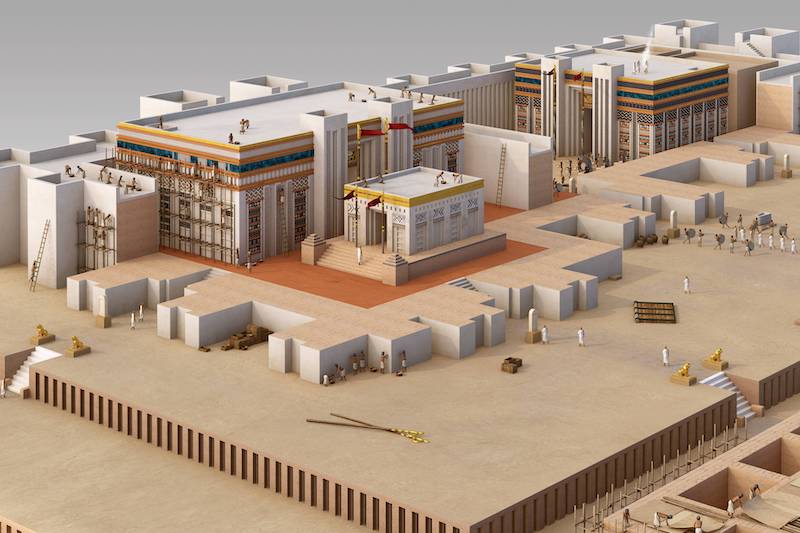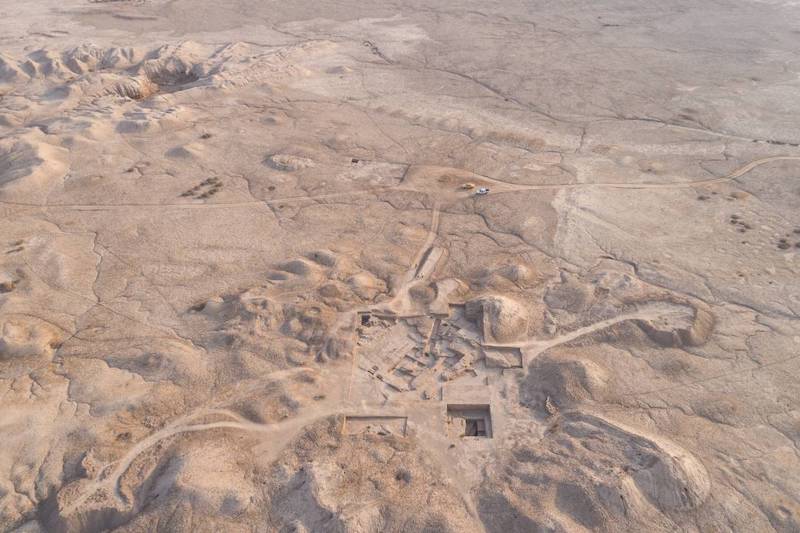Archaeologists in Iraq have unearthed the remains of a 4,500-year-old Sumerian temple in the centre of the ancient city of Girsu.
Archaeologists in Iraq have unearthed the remains of a 4,500-year-old Sumerian temple dedicated to Ningirsu, the Mesopotamian god of spring thunderstorms, the British Museum reports.
The long-lost temple was built of mudbrick and was the impressive centrepiece of the ancient city of Girsu, an archaeological site now known as Tello.
[su_posts posts_per_page=”1″ tax_term=”25457″ offset=”1″ order=”desc” orderby=”id” post_status=”any” ignore_sticky_posts=”yes”]
Archaeologist Sebastien Rey, curator of Ancient Mesopotamia at the British Museum, said that in the centre of the city of Girsu they had discovered one of the most important sacred sites in all of ancient Mesopotamia – a temple dedicated to the chief god of Girsu – and they continue to excavate the temple site to this day.
The city of Girsu was a bustling cultural centre at the heart of Mesopotamia, a vast region between the Euphrates and Tigris rivers that covered parts of Iraq, eastern Syria, southeastern Turkey, western Iran and Kuwait and was home to some of the earliest civilisations.
When French archaeologist Ernest de Sarzec first discovered the ruins of Girsu in 1877, he moved all the artefacts he could find, including a 4,000-year-old statue of the Sumerian king Gudea, who ruled the city at the end of the 3rd millennium BC. Consequently, many people thought there was nothing left to excavate at the site. Several periods of conflict also prevented scientists from accessing the site, located in the southern Iraqi province of Dikar. But Rey and his team realised that Girsu had many more secrets to uncover.

According to Rey, after the Second World War and the years of conflict that followed in Iraq, the Girsu region was partially forgotten. Today, it is not unrealistic to say that Girsu is one of the world’s most important heritage sites, perhaps known to very few people.
Now, more than a century after archaeologists last explored the extraordinary site, Rey’s team has unearthed the massive temple. The archaeologists used remote sensing techniques to reveal features of the site buried under sand and other deposits. They also created digital elevation models to understand how the terrain has changed since excavations in the 19th century.
Rey says that after five seasons of excavations at the site, they were able to uncover a large part of this ancient sanctuary – including the inner sanctuary, a ceremonial square, an inner wall with a gate – and to identify and excavate part of the perimeter wall of the religious complex, including a monumental gate.
The temple, referred to in ancient inscriptions as Enninu or “White Thunderbird”, housed the sacred statue of Ningirsu, the god of thunder, one of the most important deities of the Sumerian pantheon. According to the British Museum, the Sumerians believed that Ningirsu ruled the thunderstorms, deluges and floods of the spring months, as well as ploughing the land.
Unusually, the newly uncovered walls surrounding the sanctuary perfectly match a map carved into the statue of king Gudea found during the initial excavations.
The “White Thunderbird” or Enninu is the oldest temple about which we have detailed inscriptions (an archaic plan carved on the king statue). Rey says they were able to test their theory by drilling a series of boreholes and identifying the foundations of an actual temple gate, exactly where they predicted the temple gate would be according to the 4,000-year-old plan.
Who are the Sumerians
The Sumerians are a civilisation that lived in the geographical region known as the cradle of civilisation, settled in southern Iraq (Southern Mesopotamia) between approximately 4000-2000 BC. It is considered one of the oldest known civilisations in the world.
The Sumerians laid the foundations of numerous civilisations that emerged in the Mesopotamian region called the “Fertile Crescent”. In addition, writing and astronomy emerged for the first time in history in Mesopotamia, in the Sumerians. The general opinion is that the Sumerians had close interaction and similarities with their contemporaries.
It is accepted that the Sumerian State was founded by an isolated non-Semitic community.
Among the many different tribes living in Mesopotamia, the Sumerians were the first to come to the fore and laid the foundations of later civilisations. Sumerians were the first prominent and well-known society in the fields of writing, language, medicine, astronomy, mathematics as well as religion, fortune-telling, magic and mythology. “Creation” and “Flood”, “Emeş and Enten” were first encountered in Sumer. Christmas tree decorations, wedding rings and evil eye beads were also first seen in the Sumerians. During the Sumerian period, there were about 35 large cities and towns, 21 of which were small. These include Kish, Nippur, Zabalam, Umma, Lagash, Eridu, Uruk and Ur.





